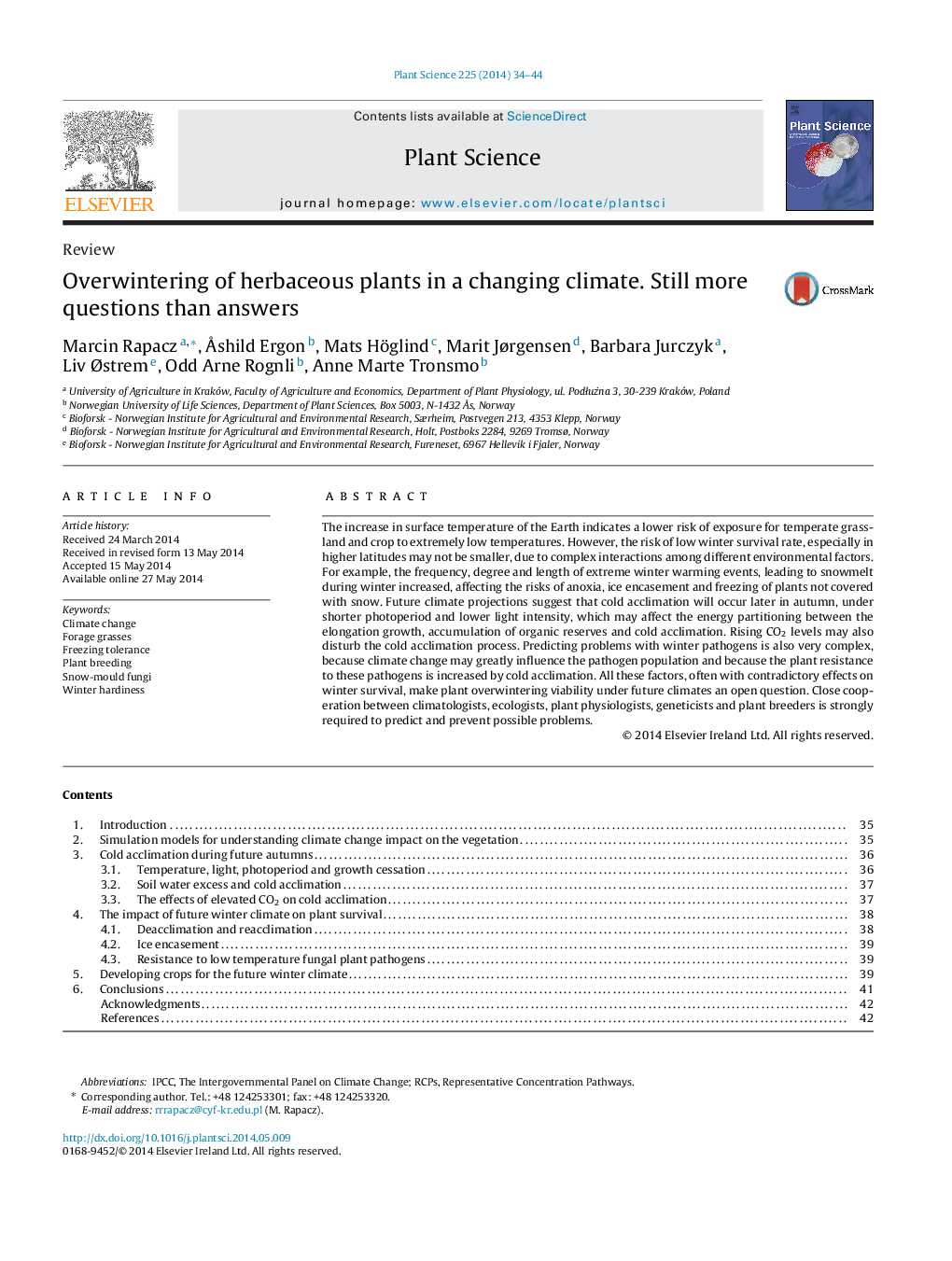| Article ID | Journal | Published Year | Pages | File Type |
|---|---|---|---|---|
| 8358238 | Plant Science | 2014 | 11 Pages |
Abstract
The increase in surface temperature of the Earth indicates a lower risk of exposure for temperate grassland and crop to extremely low temperatures. However, the risk of low winter survival rate, especially in higher latitudes may not be smaller, due to complex interactions among different environmental factors. For example, the frequency, degree and length of extreme winter warming events, leading to snowmelt during winter increased, affecting the risks of anoxia, ice encasement and freezing of plants not covered with snow. Future climate projections suggest that cold acclimation will occur later in autumn, under shorter photoperiod and lower light intensity, which may affect the energy partitioning between the elongation growth, accumulation of organic reserves and cold acclimation. Rising CO2 levels may also disturb the cold acclimation process. Predicting problems with winter pathogens is also very complex, because climate change may greatly influence the pathogen population and because the plant resistance to these pathogens is increased by cold acclimation. All these factors, often with contradictory effects on winter survival, make plant overwintering viability under future climates an open question. Close cooperation between climatologists, ecologists, plant physiologists, geneticists and plant breeders is strongly required to predict and prevent possible problems.
Keywords
Related Topics
Life Sciences
Agricultural and Biological Sciences
Plant Science
Authors
Marcin Rapacz, Ã
shild Ergon, Mats Höglind, Marit Jørgensen, Barbara Jurczyk, Liv Ãstrem, Odd Arne Rognli, Anne Marte Tronsmo,
